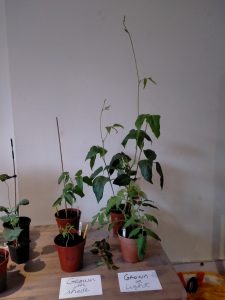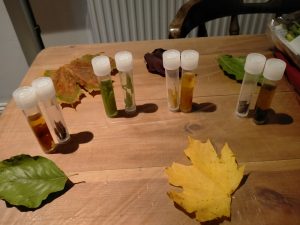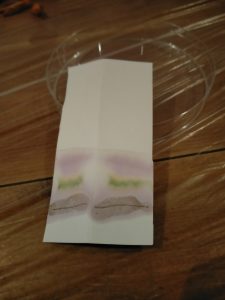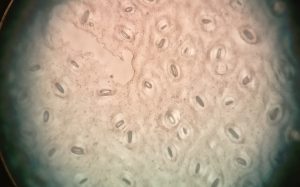First of all thanks to all of you who visited us during the fesival. It was great to share what we do at LEC, and how important sunlight & photosynthesis are for all life on Earth. 
Plant growth depends on light imput. Photosynthesis allows plants to use sunlight energy to transform carbon dioxide and water into sugars, releasing oxygen as a waste product. To show how much plants need light to grow we had with us tomato and cowpea plants that have been grown in shade or under optimal light conditions. Can you see the differences in the image?
 As part of our hands-on activities visitors measured photosynthesis and chlorophylls on plants grown in different conditions using a photosynQ. This portable equipment allows to measure plant photosynthetic efficiency so we can compare different plant varieties or growth conditions and select the best to improve crop production.
As part of our hands-on activities visitors measured photosynthesis and chlorophylls on plants grown in different conditions using a photosynQ. This portable equipment allows to measure plant photosynthetic efficiency so we can compare different plant varieties or growth conditions and select the best to improve crop production.
We regularly see plants in a big variety of greens, due to the presence of chlorophyll, the most important photosynthetic pigment. But plants have other pigments and colours that become visible in decidous plants during Autumn as you can see in the image below. 
Doing a simple extraction and separation in filter paper visitors could see the different pigments present in the leaves.

To do photosynthesis plants need to exchange gases (carbon dioxide, water vapour, and oxygen) with the atmosphere. Using a microscope visitors were able to see the stomata, the tiny pores in the surface of the leaves that plants use to do this exchange. Stomata is the greek for mouth and you can see in the image why scientist that saw them for the first time give them this name.
We hope that you liked it and had fun with our activities.
Tamara
